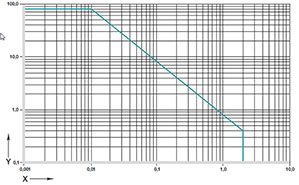iglidur® H1 plain bearings have been specially developed for use under extreme environmental conditions. Their strengths are the extremely high wear resistance and the excellent coefficients of friction even in applications in which the bearing is exposed to extreme temperatures and/or aggressive chemicals. iglidur® H1 bearings can be used completely free of lubrication; in wet area applications, the surrounding medium acts as additional lubricant.
iglidur® H1 - Material data
| General features | Unit | iglidur® H1 | test method |
| Density | g/cm³ | 1,53 | |
| Colour | cream-white | ||
| Max. humidity absorption at 23°C/50% R. H. | % weight | 0,1 | DIN 53495 |
| Max. water absorption | % weight | 0,3 | |
| Coefficient of surface friction, dynamic, against steel | µ | 0,06 - 0,20 | |
| PV values max. (dry) | MPa x m/s | 0,8 | |
Mechanical properties |
|||
| Bending E-module | MPa | 2800 | DIN 53457 |
| Tensile strength at +20 °C | MPa | 55 | DIN 53452 |
| compressive strength | MPa | 78 | |
| Maximum recommended surface pressure (20° C) | MPa | 80 | |
| Shore D hardness | 77 | DIN 53505 | |
Physical and thermal properties |
|||
| Max. long term application temperature | °C | +200 | |
| Max. short term application temperature | °C | +240 | |
| Lower application temperature | °C | -40 | |
| Heat conductivity | [W/m x K] | 0,24 | ASTM C 177 |
| Coefficient of thermal expansion (at 23° C) | [K-1 x 10-5] | 6 | DIN 53752 |
Electrical properties |
|||
| Specific forward resistance | Ωcm | > 1012 | DIN IEC 93 |
| Surface resistance | Ω | > 1011 | DIN 53482 |
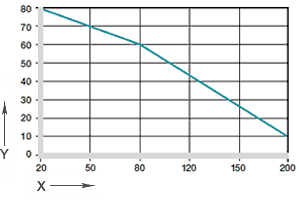
Figure 02: Maximum recommended surface pressure dependent on the temperature (80 MPa to +20 °C)
X = Temperature [°C]
Y = Load [MPa]
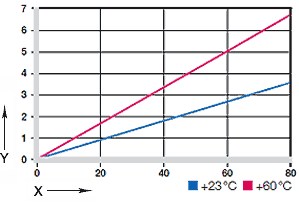
Figure 03: Deformation under load and temperatures
X = Load [MPa]
Y = Deformation [m/s]
Maximum recommended surface pressure represents a mechanical material parameter. Tribological conclusions cannot be drawn from it. With increasing temperatures, the compressive strength of iglidur® H1 bearings decreases. Fig. 02 clarifies this connection.
Figure 03 shows the elastic deformation of iglidur® H1 with radial loads. Among the iglidur® H materials, iglidur® H1 material has the greatest elasticity. This needs to be taken into account in applications with high surface pressures or edge loads.
| m/s | Rotating | oscillating | Linear |
| Constant | 2 | 1,0 | 5 |
| Short-term | 2,5 | 1,5 | 7 |
Table 02: Maximum surface speeds
Due to the excellent coefficients of friction, rotating surface speeds up to 2 m/s are possible with iglidur® H1 plain bearings in dry operation. Linear speeds up to 5 m/s are attained. The speeds stated in Table 02 are limit values for the lowest bearing loads. With higher loads, the permitted speed drops with the extent of the load due to the limitations by the PV value.
| iglidur® H1 | Operating temperature |
| Lower | - 40 °C |
| Upper, long-term | + 200 °C |
| Upper, short-term | + 240 °C |
| Secure axially in addition | + 80 °C |
iglidur® H1 is a very temperature-resistant material. The temperatures prevailing in the bearing system also have an influence on the bearing wear. The wear rises with increasing temperatures. In iglidur® H1 in particular, this increase however is very low. An additional securing is recommended at temperatures higher than +80°C.
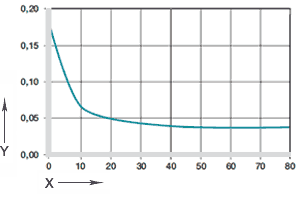
Figure 04: Coefficients of friction dependent on the surface speed, p = 0,75 MPa
X = Surface speed [m/s]
Y = Coefficient of friction μ
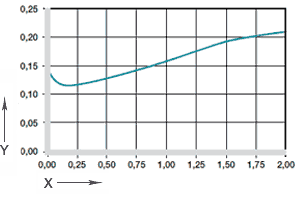
Figure 05: Coefficients of friction dependent on the load, v = 0,01 m/s
X = Load [MPa]
Y = Coefficient of friction μ
The coefficient of friction alters like the wear resistance with increasing loadand surface speed (Fig. 04 and 05).
| iglidur® H1 | Dry | Grease | Oil | Water |
| Coefficients of friction µ | 0,06 - 0,2 | 0,09 | 0,04 | 0,04 |
Table 04: Coefficients of friction for iglidur® H1 against steel
(Ra = 1 µm, 50 HRC)
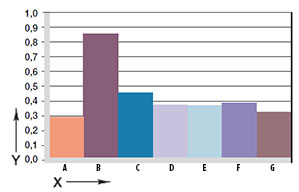
Figure 06: Wear, rotating application with different shaft materials, p = 1 MPa, v = 0,3 m/s
X = shaft materials
Y = wear [μm/km]
A = Aluminum, hard-anodized
B = machining steel
C = Cf53
D = Cf53, hard chrome-plated
E = St37
F = V2A
G = X90
Figures 06 and 07 display a summary of the test results with different shaft materials conducted with iglidur® H1 plain bearings at the igus® laboratory.
The iglidur® H1 plain bearings display excellent wear behavior in combination with a wide variety of shaft materials both in rotating and pivoting operations. On the V2A shafts in particular, iglidur® H1 attains very low wear rates both in rotating and pivoting operations. Even on hard-coated aluminum shafts, iglidur® H1 plain bearings attain high service life in rotating applications with low to medium loads.
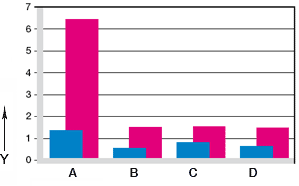
Fig. 07 Wear with oscillating and rotating applications with Cf53 according to the load
Y = wear [μm/km]
A= Cf53
B= hard chrome-plated
C= V2A
D= St37
pink= oscillating
blue= rotaring
| Medium | Resistance |
| Alcohols | + |
| Hydrocarbons | + |
| Greases, oils without additives | + |
| Fuels | + |
| Diluted acids | + to 0 |
| Strong acids | + to - |
| Diluted bases | + |
| Strong bases | + to - |
All specifications at room temperature[20 °C]
Table 05: Chemical resistance of the iglidur® bearings H1
Electrical properties
| Specific forward resistance | > 1012 Ωcm |
| Surface resistance | > 1011 Ω |
iglidur® H1 bearings have a good resistance against chemicals. Hence even chemicals can act as lubricants. The iglidur® H1 plain bearings are not resistant against hot, oxidizing acids and some other particularly aggressive chemicals.
They are resistant up to a radiation intensity of 2 x 102 Gy.
igubal® H1 bearings are only conditionally resistant to UV rays. The surface of iglidur® H1 becomes coarser under the influence of atmospheric conditions and the wear increases. Therefore the use of iglidur® H1 plain bearings in applications directly exposed to weathering should be tested in individual cases.
Note that during use in vacuum, even minor water elements outgas. The use in vacuum is basically possible.
| Maximum moisture absorption | |
|---|---|
| by +23 °C/50 % r. F. | 0,1 weight-% |
| Max. water absorption | 0,3 weight-% |
Table 06: The moisture absorption of iglidur® H1 bearings
The moisture absorption of iglidur® H1 bearings is about 0.1 Wt.-% in standard climatic conditions. The saturation limit in water is 0.3 Wt.-%. Therefore iglidur® H1 is very well suited for use in wet environments.
| Diameter d1 [mm] |
Shaft h9 [mm] |
iglidur® H1 F10 [mm] |
Housing H7 [mm] |
| Up to 3 | 0 - 0,025 | +0,006 +0,046 | 0 +0,010 |
| > 3 to 6 | 0 - 0,030 | +0,010 +0,058 | 0 +0,012 |
| > 6 to 10 | 0 - 0,036 | +0,013 +0,071 | 0 +0,015 |
| > 10 to 18 | 0 - 0,043 | +0,016 +0,086 | 0 +0,018 |
| > 18 to 30 | 0 - 0,052 | +0,020 +0,104 | 0 +0,021 |
| > 30 to 50 | 0 - 0,062 | +0,025 +0,125 | 0 +0,025 |
| > 50 to 80 | 0 - 0,074 | +0,030 +0,150 | 0 +0,030 |
Table 07: Important tolerances iaw. ISO 3547-1 after press-fitting.
iglidur® H1 bearings are press-in bushings for shafts with h-tolerance (recommended minimum h9).
The bearings are designed for press-fit in a housing with h7 tolerance. After the installation in a housing with nominal diameter, the inner diameter of the bearing automatically adjusts to the F10 tolerance. In certain dimensions the tolerance in dependence on the wall thickness deviates from this (See delivery program )
More than 100,000 products available! Delivery and consultation Mon-Fri from 7am-8pm and Sat from 8am-12pm!
